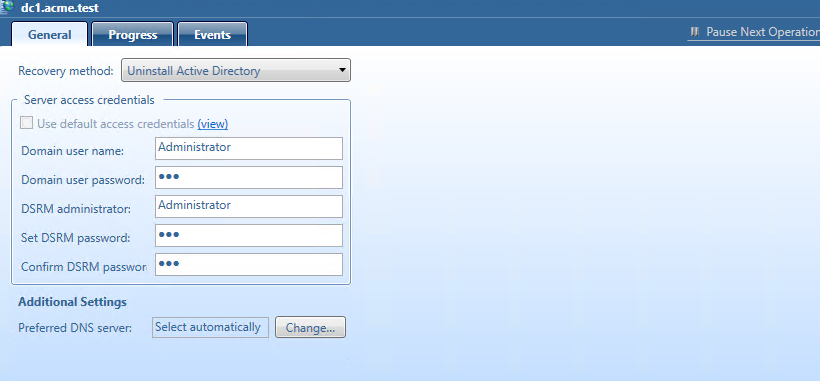Uninstall Active Directory method
This recovery method removes Active Directory from the domain controller and then demotes it to a member server in the domain. Domain controller’s metadata is completely removed from Active Directory.
| Note |
When you use this method, the local Administrator password on the target domain controller is reset to the value you specify in the Set DSRM password and Confirm DSRM password text boxes in the Forest Recovery Console. |
For details about recovery method settings, see Domain controller recovery settings and progress.
Restore SYSVOL
Recovery Manager for Active Directory supports authoritative restore of SYSVOL on the selected domain controllers. Authoritative SYSVOL restores are used in case of critical situations such as divergence of data in the content of the SYSVOL share.
For details, see Recovering SYSVOL.
Restore Active Directory on Clean OS method
Using the Restore Active Directory on Clean OS method you can restore the entire forest or any of its parts on the freshly installed Windows machines. This recovery method can be used, for example, when existing BMR backups contain the infected OS image. In this case, the Active Directory backups can be used due to they do not contain binaries (expect Sysvol files), so they are better than BMR backups in terms of potential viruses.
For details, see Restore Active Directory on Clean OS.
Bare Metal Active Directory Recovery method
Bare Metal Active Directory Recovery method lets you fully restore the domain with the combination of the most recent RMAD BMR backup and the latest Active Directory (standard) backup.
For details, see Bare metal forest recovery.

